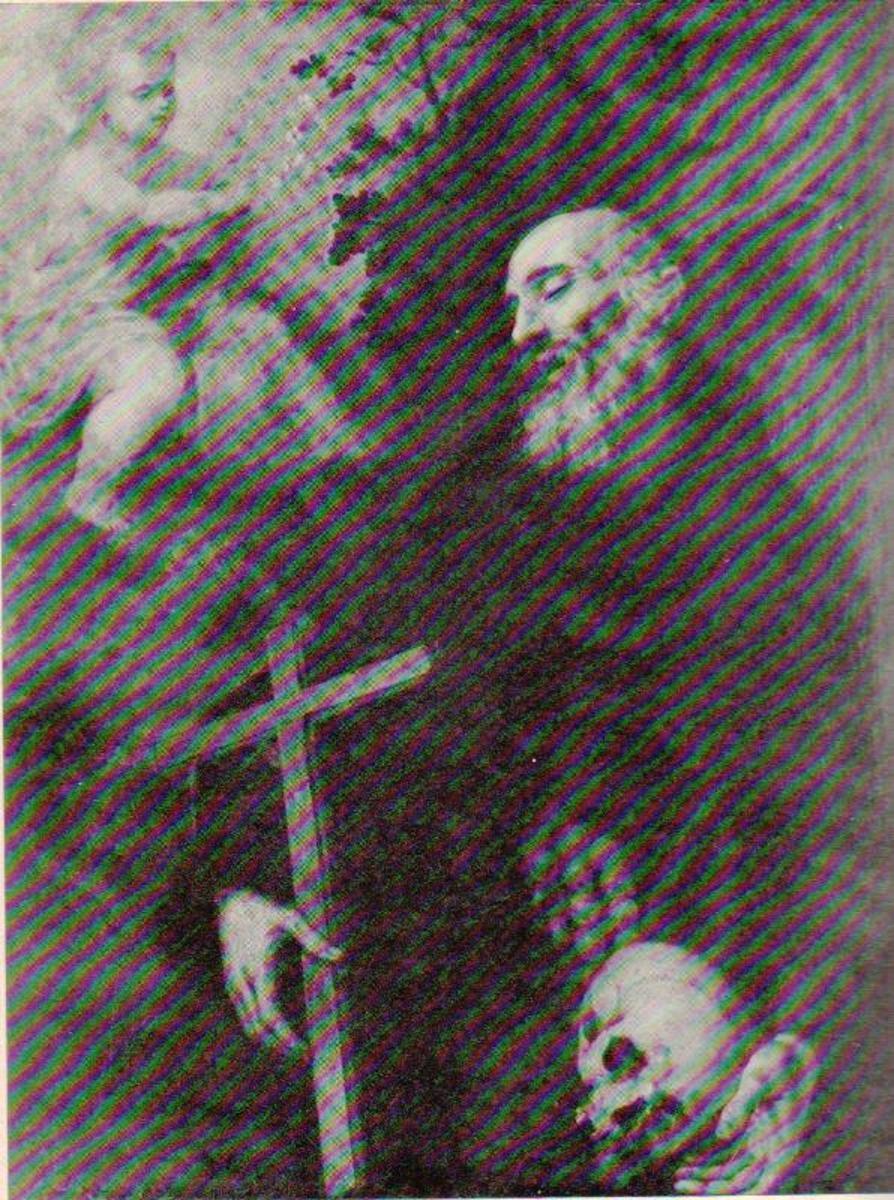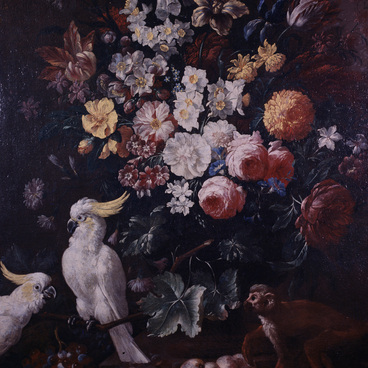Mysticism, alchemy, superstition and religion strongly influenced the work of the 17th-century Spanish artists. The Catholic Church has a number of saints named Francis, but the most famous is Francis of Assisi. In different countries, the members of the order that he had founded were called “Greyfriars”, “Cordillera” and “barefoot.” The main rule of mendicant monks was to live in poverty and rely on the neighbor’s mercy.
The painting “Saint Francis” by Juan de Valdés Leal features an elderly monk in a dark cassock. He is detached from reality and is in the state of deep sleep. His weakened hands can barely hold the large wooden cross and the skull — symbols of human frailty. An angel descends to the monk with a wreath in his hands: this is a messenger from heaven with a message from the Lord.
The black color dominates the palette, but the variety of lilac, olive and transparent shades creates a special atmosphere in the painting. The picture evokes the feeling of otherworldly mystery, a premonition of sacred knowledge and blessings from above. The author masterfully conveyed the drama, the complex state of mind, and the boundary state of the worlds. Together with Saint Francis, we find ourselves in the exceptional moment, the outcome of which is unknown.
Juan de Valdés Leal was a Seville painter, engraver, sculptor and architect of the Baroque era. In 1660, he became a co-founder of the Seville Academy of Fine Arts. He was also the chief administrator of the Brotherhood of St. Luke — the guild of painters in Seville. Leal’s most ambitious works were the murals in the monastery of Santa Clara in Carmona and the series “Hieroglyphs of Our Last Days” in the Seville church of the Brotherhood of the Mercy of the Lord.
The main themes in Leal’s work are sacraments, the torment of saints and mystical allegories. They are embodied in complex biblical stories and scenes of sacrifice. Valdés Leal was fascinated by the afterlife and the moment of entering it and leaving the world of the living.
Most of the paintings by Juan de Valdés Leal were destroyed in the early 19th century during the Peninsular War. Today, Leal’s remaining works are on display in the Prado, the Louvre, the museums of Seville, London, Washington, Saint Petersburg, and in private collections.
The painting “Saint Francis” by Juan de Valdés Leal features an elderly monk in a dark cassock. He is detached from reality and is in the state of deep sleep. His weakened hands can barely hold the large wooden cross and the skull — symbols of human frailty. An angel descends to the monk with a wreath in his hands: this is a messenger from heaven with a message from the Lord.
The black color dominates the palette, but the variety of lilac, olive and transparent shades creates a special atmosphere in the painting. The picture evokes the feeling of otherworldly mystery, a premonition of sacred knowledge and blessings from above. The author masterfully conveyed the drama, the complex state of mind, and the boundary state of the worlds. Together with Saint Francis, we find ourselves in the exceptional moment, the outcome of which is unknown.
Juan de Valdés Leal was a Seville painter, engraver, sculptor and architect of the Baroque era. In 1660, he became a co-founder of the Seville Academy of Fine Arts. He was also the chief administrator of the Brotherhood of St. Luke — the guild of painters in Seville. Leal’s most ambitious works were the murals in the monastery of Santa Clara in Carmona and the series “Hieroglyphs of Our Last Days” in the Seville church of the Brotherhood of the Mercy of the Lord.
The main themes in Leal’s work are sacraments, the torment of saints and mystical allegories. They are embodied in complex biblical stories and scenes of sacrifice. Valdés Leal was fascinated by the afterlife and the moment of entering it and leaving the world of the living.
Most of the paintings by Juan de Valdés Leal were destroyed in the early 19th century during the Peninsular War. Today, Leal’s remaining works are on display in the Prado, the Louvre, the museums of Seville, London, Washington, Saint Petersburg, and in private collections.


